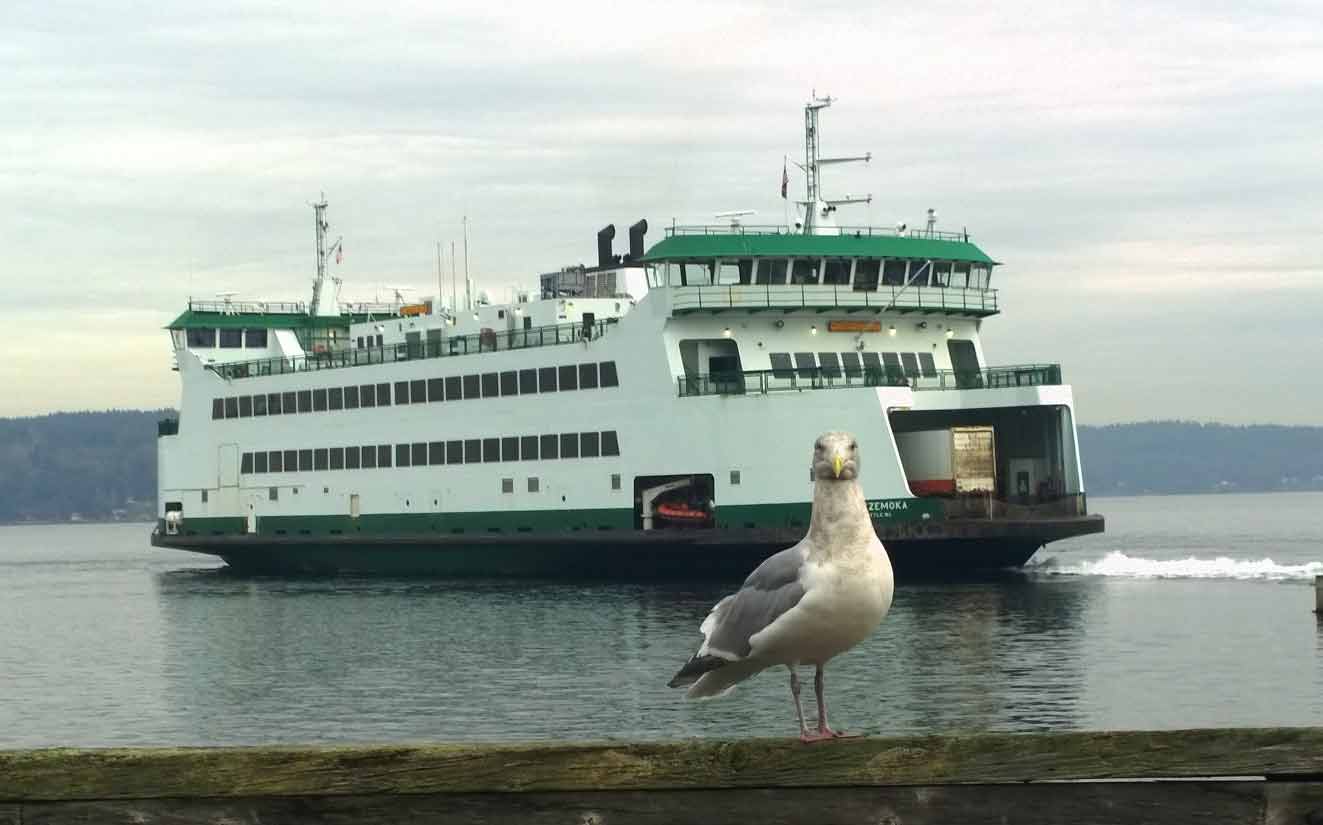Governor Jay Inslee’s Maritime Innovation Advisory Council launches year-long effort to develop comprehensive strategy for leading the nation in “blue” ocean industry technology and practices
Washington Gov. Jay Inslee charged the new Maritime Innovation Advisory Council to create and expand the nation’s most sustainable ocean industry and technology cluster by the year 2050.
Meeting for the first time at Bell Harbor Conference Center in Seattle, the 20-member council represents business, government, ports, research, labor, tribes and the environmental community. Members will work with international maritime industry consultant DNV GL on a statewide strategy.
Dubbed “Washington Maritime Blue,” the year-long, in-depth strategy development is made possible by a $500,000 grant from the U.S. Economic Development Administration to the state Department of Commerce, matched dollar-for-dollar with state and local funds.
“Blue economy” refers to developing maritime business, technology and practices that grow a sustainable future, contributing to ecological health, thriving communities and economic growth.
“In Washington, we are beneficiaries and stewards of this great maritime legacy. From ship building to recreational boating, commercial fishing to logistics and shipping, marine research to luxury cruises, the ocean is in our blood,” Gov. Jay Inslee said. “Through this initiative, we will ensure that our state is positioned to thrive in the increasingly competitive international marketplace for maritime services, while working proactively to solve some of our most pressing local and global environmental and community challenges.”
Co-chairing the Advisory Council are:
Rep. Gael Tarleton, Washington State Legislature
Dennis McLerran, Cascadia Law Group, frmer Environmental Protection Agency Region 10 administrator
Frank Foti, Vigor
“The Joint Legislative Task Force on Economic Resilience of Maritime and Manufacturing, which I co-chaired, focused on creating policies and incentives to protect maritime industrial lands, modernize the Alaska fishing fleet, bolster innovation and build a diverse workforce, all in a sustainable manner,” said Rep. Tarleton. “By bringing together industry, labor, environmental, research and government leaders, the Governor’s Maritime Innovation Advisory Council gives us a much-needed boost to accelerate the rate at which our maritime-related industries are part of the clean economy revolution.”
“We are already interdependent up and down the West coast and with our Asian partners. Our question is: How do we build on the global excellence we have already achieved,” said Council Co-chair McLerran. “By working together, we have the opportunity to ensure we have the policies and incentives in place up front to ensure that environmental stewardship is a competitive advantage and a marketing tool for our maritime industry.”
Vigor CEO and Council Co-chair Foti said, “Our industry works every single day to serve customers in a highly competitive environment, and it is not always easy to take the long view in such circumstances. At Vigor we believe tomorrow’s economic opportunities involve sustainable solutions. A successful strategy for a sustainable maritime industry will include identifying courageous and committed long-term investment that will allow the maritime industry to lead in a way that honors our precious environment, accelerates innovation and creates great opportunities for skilled workers.”
“Washington’s $37.8 billion maritime industry strengthens communities all over the state by employing a diverse workforce of nearly 70,000,” said Brian Bonlender, director of the Washington State Department of Commerce. “Building on our strengths, our goal is to lead the world in creating a green, efficient, sustainable maritime sector that will serve as a model for the rest of the country.”


Event keynote speaker David Walker, group chief development officer of the Norway-based consulting firm DNV GL, addressed global trends in maritime innovation.
“Across the globe, maritime clusters are shaping developments that will set the future direction for a sustainable industry. The movement to de-carbonization and clean technology innovation is upon us, environmentally friendly fuels and electric propulsion are a reality, and digitalization is transforming the way we operate,” Walker said. “Rather than view technology and innovation as simply tools to address the challenges we face in the maritime industry, we must instead work together to embrace the opportunities they offer for a sustainable and prosperous society.”
The so-called “blue economy” is taking off around the world, from ships humming with electric engines to port efficiency and ocean research. Studies predict that in coming decades, scientific and technological advances will play a crucial role in addressing ocean-related environmental challenges and ocean-based economic activities.
Additional briefings on promising “blue” trends in the state included remarks from:
Maritime Innovation Center – Dave McFadden, Port of Seattle
State Ferries Electrification – Amy Scarton, WSDOT
Shipping, Ports and Green Marine Certifications – Eleanor Kirtley, GreenMarine
Research and Commercialization – Dr. Andy Stewart, UW – Applied Physics Lab
Sustainable Fisheries – Kenny Down, Blue North
Workforce, Education and Training – Catherine Collins, Sound Experience
Maritime Blue has three main objectives:
Set the course for sustainable maritime industry innovation. The Washington Maritime Blue strategy is intended to ensure Washington state is home to the most sustainable maritime industry by 2050, aligned with Gov. Inslee’s plans for deep de-carbonization, innovation and workforce development.
Support strong blue technology cluster coordination, forming strategic alliances, growth in trade, and increased jobs.
Support development of the Washington Maritime Innovation Center at the Port of Seattle, in partnership with the Port of Seattle and the University of Washington’s Applied Physics Lab.
– Washington State Department of Commerce








